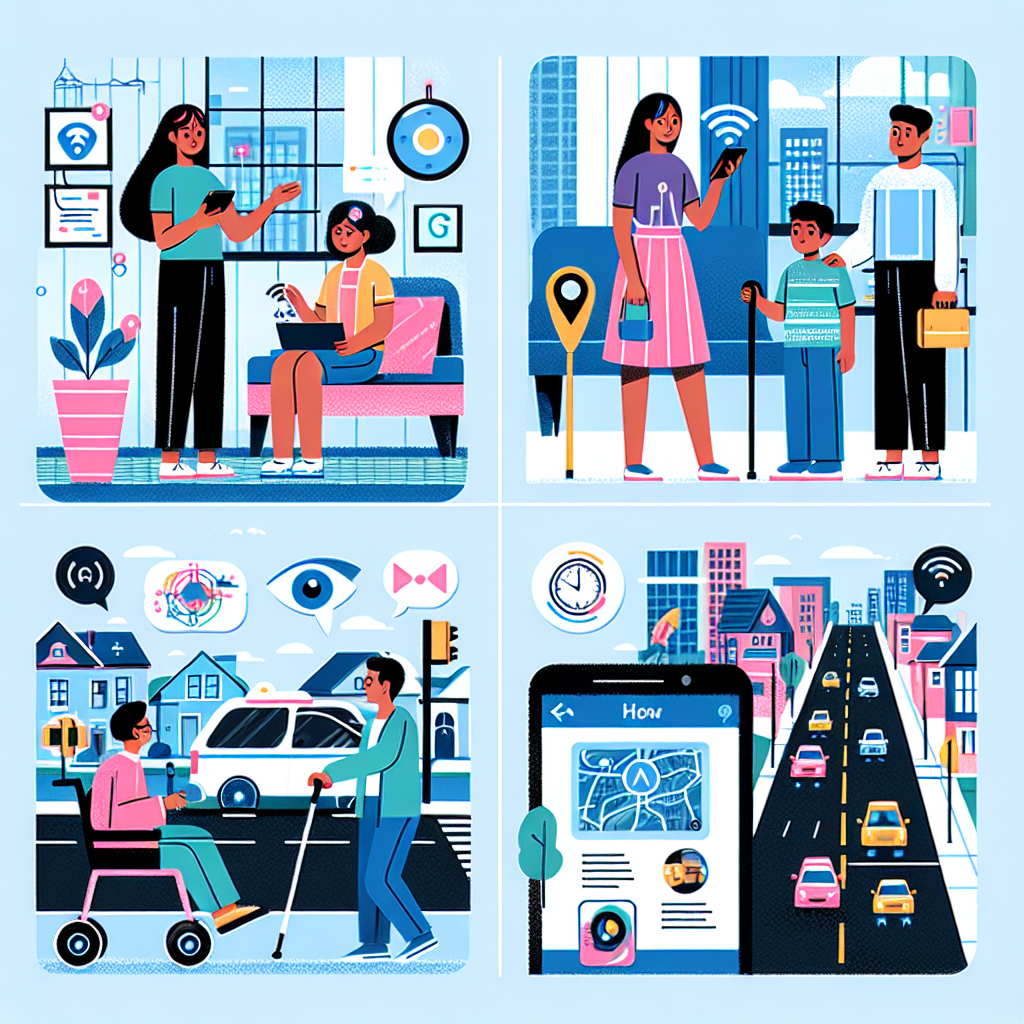
Artificial intelligence (AI) has the potential to significantly enhance the quality of life for individuals with disabilities, offering solutions that improve accessibility, independence, and overall well-being. From aiding communication to enhancing mobility, AI-driven technologies are transforming the way people with disabilities interact with the world. Here’s an overview of how AI is making a positive impact:
1. Communication Aids
AI-powered communication aids are breaking down barriers for individuals with speech and hearing impairments.
- Speech Recognition and Generation: Technologies like speech-to-text applications and AI-powered voice synthesis help individuals with speech disabilities communicate more effectively. Tools such as Microsoft’s Azure Cognitive Services and Google's Live Transcribe convert spoken language into text, facilitating easier interaction.
- Real-Time Translation: AI-driven translation apps provide real-time sign language interpretation and text translation, bridging communication gaps for individuals who are deaf or hard of hearing.
2. Mobility and Navigation
AI-assisted mobility solutions enhance independence and accessibility for individuals with physical disabilities.
- Smart Wheelchairs and Exoskeletons: AI-driven smart wheelchairs and robotic exoskeletons offer improved maneuverability and support, helping users navigate different environments with ease and enhancing mobility.
- Navigation Apps: AI-based navigation apps provide detailed guidance and obstacle detection, helping individuals with visual impairments or mobility challenges navigate public spaces and unfamiliar environments.
3. Assistive Technologies
AI-powered assistive technologies are designed to support individuals with a wide range of disabilities.
- Voice-Activated Devices: Smart home devices controlled by voice commands, such as Amazon Alexa and Google Home, assist individuals with physical limitations in managing household tasks, adjusting settings, and accessing information.
- Smart Glasses: AI-enhanced smart glasses, like those developed by companies such as Aira and eSight, provide real-time object recognition, text reading, and navigation assistance for individuals with visual impairments.
4. Personalized Learning and Support
AI-driven educational tools offer personalized learning experiences and support for individuals with learning disabilities.
- Adaptive Learning Platforms: AI-based platforms like DreamBox and Kurzweil 3000 adjust educational content and teaching methods to accommodate different learning styles and needs, making education more accessible and effective.
- Reading and Writing Assistance: Tools such as text-to-speech software and grammar checkers use AI to assist individuals with dyslexia and other learning disabilities in reading and writing tasks.
5. Healthcare and Monitoring
AI in healthcare provides tailored support and monitoring for individuals with disabilities.
- Predictive Health Monitoring: AI systems analyze health data to predict potential complications and provide early warnings, helping individuals with chronic conditions or disabilities manage their health more effectively.
- Personalized Rehabilitation: AI-driven rehabilitation programs offer customized exercises and feedback, supporting individuals with physical impairments in their recovery and improving their functional abilities.
6. Social Inclusion and Advocacy
AI supports social inclusion and advocacy efforts by raising awareness and fostering community engagement.
- Accessibility Mapping: AI tools create detailed accessibility maps and reviews for public spaces, helping individuals with disabilities find accessible locations and services.
- Virtual Communities: AI-powered platforms facilitate virtual communities and support networks, allowing individuals with disabilities to connect, share experiences, and access resources.
Conclusion
AI is making significant strides in improving the lives of individuals with disabilities by enhancing communication, mobility, education, healthcare, and social inclusion. These technologies are helping to create a more accessible and inclusive world, empowering people with disabilities to achieve greater independence and participate fully in society. As AI continues to advance, its potential to support and uplift individuals with disabilities will only grow, driving further innovations and improvements in accessibility and quality of life.





